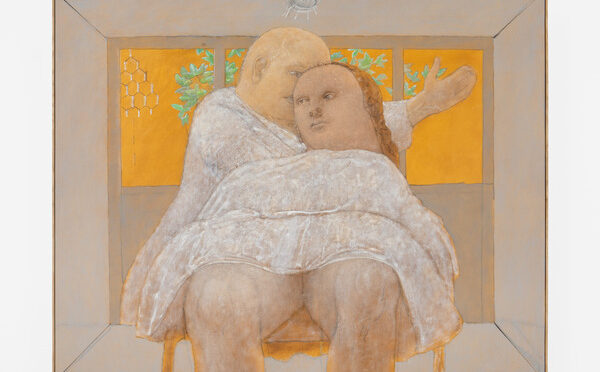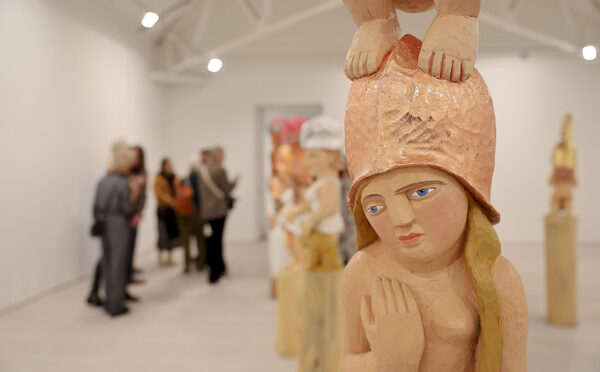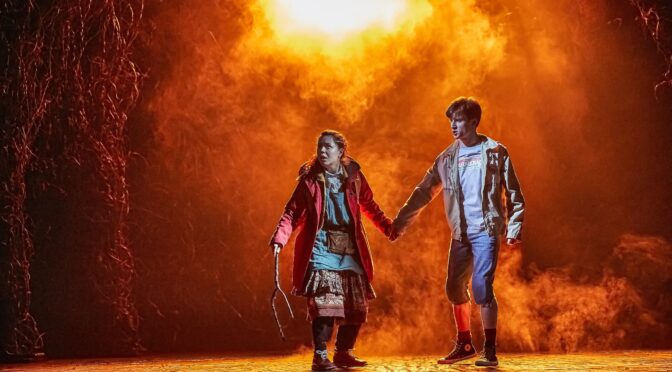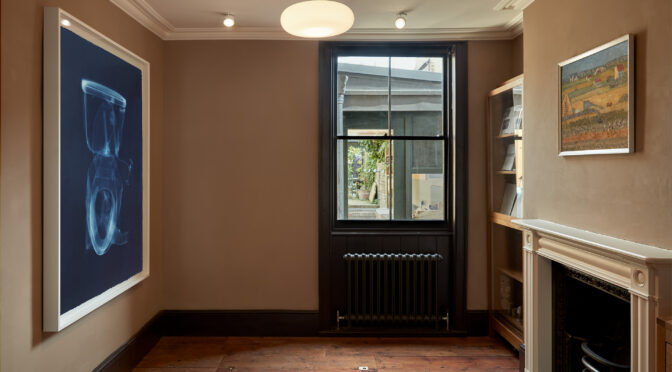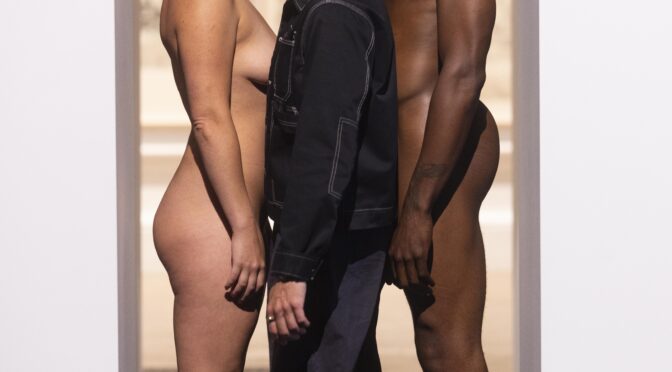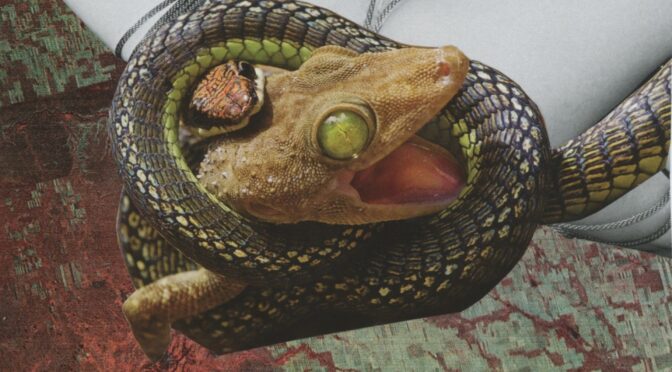An interior life capsulated, Centenary at Sadie Coles marks 100 years from Co Westerik’s birth. An encounter with the body, own and otherwise takes us away from a spring in a haze, with the blades of grass left uncut, and red tape swam through. This presentation delves beyond the mere descriptors, walking through Westerik’s fruitful later period as an artist, showcasing paintings and works on paper from 1972 to 2016.
New declarations breathe out in Contact [2014], a child extends a finger to the sky, and a translucent ephemera above lingers as the main attraction. This white mist refuses to offer anything back. Whether it is real or not, the entity remains a mystery, this is no dreamer’s magic and the boy is left to seek no wonder.
Throughout the exhibition, nothing rises too fast instead a slow mediative flow leads us, and we are invited to participate as a voyeur as we travel around the show. The lone bodies are considered in multitudes among Westerik’s paintings, and we as the audience are left to fill in the gaps of how the intimacy was left off.
A tale true in Portrait of a Young Woman [2013], this painting is unwavering, as the young woman wears empathetic eyes, with an otherwise invariably muted expression. Backgrounds brushed in, her stoking and tentative fingers stroking the table as she was left waiting for a response, from us, the seemingly blind-sighted viewers. The internal logic of working through the self and all its encounters arrives at this conclusion: the works are given to us from the perspective of people Westerik must have known, or at least imagined to have shared space with in thoughts deep down.
The bonds shared of the relationships we have forged with one another are plain to see, and the narratives have been built upon to create whole landscapes for the shared secrets between two.
All of it changed like a new sun in the sky, Intense Summer Event [1998], is body and landscape as they appear to miss one another. The scene depicts two molten bodily forms on spikes, the backs of which face us. Any translucent shading does not mute the feelings, with both heads of misshapen form tilted away from the sky above. Is this a picturesque view, the sky is filled with puffy clouds that mirror in shape the supposed man and woman’s bodily existence, tailored to every curve and extrusion. Feelings are unremedied as new growths bring new truths and worlds, the connections between people, the known and the stranger are like Spring and Autumn. All that can be known is between the changing of the seasons.
Wide-eyed blighted and washed up, Draftsman [2015], is bloated and ironically slightly out of proportion. Scale and perspective are folly to play with, never to be trusted or held upon too strongly in Westerik’s paintings. A petal left a flower about to bloom, the simple in the universally known, Westerik long-yearning dedication with a colour palette consistency spans many decades it seems. Westerik dares never to fall into a game of aesthetics, or any decorative commitment, instead pivoting to conversing well with realism. This mottled paintwork which features as a trademark to Westerik’s painting style, the once-in-a-while complacent line, and caustic brushwork grounds the work in gratitude to the propensities of the interior life, the truth in the domestic and the so-called ordinary self. The painter’s treatment may differ from painting to painting, in Debarked Tree [2009], the paint is wiped away, with the swipes left to dry, and bare canvas is never laboured over to hide a stippling brush. While figuration in a plant outdoors [1974] has a waxy finish, the gloss coat acts as a protection overcoat over a humble scene.
Most paintings are branded with the year of completion and with his surname, Westerik, this continues also with the works on paper. The works on paper of Grand Val [2000] and Nude Outside [1972], were personal favourites. These delicate storyboarding scenes are romantic, endowed with the transparency of washed currish lines and expressions never to be painted over.
Of the final two paintings we encounter, the first is Doctor and Patient [2014], which is such a probing image. Chalky skin, and a gaze to be averted from. Confusion and conflict of bodies from the patient’s gown to the doctor’s uniform, – where does it ever begin or end from one to another? Any hard-won confidentiality is gone, it feels rather inflexible and uncomfortable as to where we the audience may be located within the space. The final arresting image is the Hairdressing girl [2016], she misses her reflection, an eye barely there to look back. It gave it all, so I stay a little longer, staring at the wide front glass, beyond which the heavy pencilled-in lines carve out detail like fingernails down a board, is a bleary portrait. Text is scrawled on the top section of the painting, translating to a mere descriptor, something Westerik’s work never falls into the category of.
Westerik is devout to the interior monologue and has paid it forward, delivering a prolific catalogue, filled with feelings of self-othering, and holding ground in self-examination. Centenary is on view for our self-reflections at Sadie Coles right until the 13th of January.
Image: Co Westerik, Doctor and Patient 2014, tempera, alkyd, oil paint on canvas, 100 x 125 cm / 39 x 49 in
Credit: © Westerik Foundation. Courtesy the Artist, Westerik Foundation and Sadie Coles HQ, London
For more information visit Co Westerik: Centenary | Sadie Coles HQ
Review by Devika Pararasasinghe
Devika lives and works in London, by trade as an artist and snake oil salesperson. Devika graduated last September with a research MFA at Ruskin School of Art, University of Oxford.

